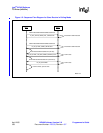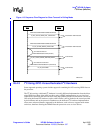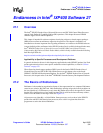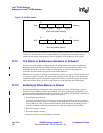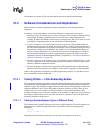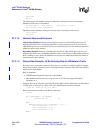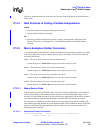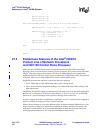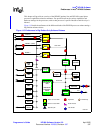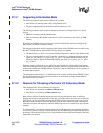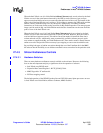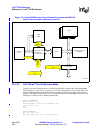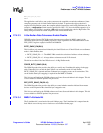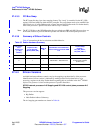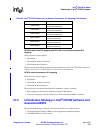
Intel
®
IXP400 Software
Endianness in Intel
®
IXP400 Software
April 2005 IXP400 Software Version 2.0 Programmer’s Guide
346 Document Number: 252539, Revision: 007
#define htonl(A) (A)
#define ntohs(A) (A)
#define ntohl(A) (A)
#elif defined(LITTLE_ENDIAN) /* the value of A will be byte swapped */
#define htons(A) ((((A) & 0xff00) >> 8) | ((A) & 0x00ff) << 8))
#define htonl(A) ((((A) & 0xff000000) >> 24) | \
(((A) & 0x00ff0000) >> 8) | \
(((A) & 0x0000ff00) << 8) | \
(((A) & 0x000000ff) << 24))
#define ntohs htons
#define ntohl htohl
#else
#error "One of BIG_ENDIAN or LITTLE_ENDIAN must be #defined."
#endif
27.4 Endianness Features of the Intel
®
IXP4XX
Product Line of Network Processors
and IXC1100 Control Plane Processor
Within the Intel
®
IXP4XX Product Line of Network Processors and IXC1100 Control Plane
Processors, there are several devices connected via the system bus. The system consists of the Intel
XScale
®
Core, network processing engines, PCI devices, APB peripherals and expansion bus
peripherals. The Intel XScale core may operate in either Little- or Big-Endian mode. The operation
of the Intel XScale core in Little-Endian mode creates a mixed-endian system.
Supporting more than one endian in a system may have two meanings:
• Case 1: Either Big or Little-endian in the entire system, but not mixed;
• Case 2: Some hardware components running in one endian mode while others running in the
other endian mode.
The IDEAL_BI_ENDIAN objectives cannot be achieved in the second case but can be achieved in
the first case, as explained in “Endianness When Memory is Shared” on page 342. An IXP4XX
processor or a system based upon such as processor belongs in the second case.
In order to support more than one endianness as implied by “Case 2”, a hardware byte-swapping or
address swizzling (or munging) facility is usually employed.
When a piece of memory is accessed by different pieces of hardware through different buses, a bus
bridge is usually a good place to perform byte swapping or address swizzling. This ensures that
each processor does not need to do any endian adjustments. Instead, the processor assumes the
underlying hardware behaves as if it is the same endianness as the processor.



